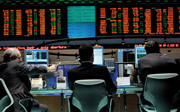With equity investing on the rise, Mark Pumfrey at Liquidnet says there are reasons to be hopeful of a possible return to the higher levels experienced in 2008.
It has been widely reported that since the beginning of 2013, equity investing is on the rise. While it is too early to speculate whether volumes will return to the high levels of pre-2008, there are reasons to be confident of a trend reversal.
Stocks in the world’s developed nations posted the best start to a year in two decades, with inflows into equity mutual funds globally reaching $10.4 billion (€8 billion), compared with outflows of $2.5 billion last year.
This paints a strong picture in terms of a return of investor confidence and in the performance of equities.
Notwithstanding this confidence shift, when executing on the decisions of their portfolio managers, traders face a challenging reality and this is becoming a clear concern for all involved in and/or interested in the overall performance of the fund. The infrastructure supporting equity markets trading has changed, irreversibly.
CHANGES
While the history and drivers of this change have been well documented, they are worth a reminder for those trying to understand today’s reality. In 2007, the European Union’s Markets in Financial Instruments Directive (MiFID) abolished the concentration rule, which gave rise to the creation of new trading platforms known as alternative trading venues. MiFID also introduced an obligation for traders to find “best execution” for every trade.
Sometimes misunderstood as merely a requirement to secure the best price for trade execution, best execution should refer to a commitment to reduce market impact and information leakage, in addition to the cost consideration.
Best execution is in the interest of asset management firms; it has been good for competition and for reducing costs which are ultimately passed on to the end investor. However, the proliferation of trading venues has created market fragmentation, which means that traders have had to equip themselves with tools that help them search all the different trading venues – including traditional exchanges and multilateral trading facilities – to find best execution and, most importantly, liquidity.
Moreover, during the same time as market fragmentation occurred, there has been an increase in high-frequency trading (HFT) activity in the market place. In some ways, these two developments are correlated since traditional stock exchanges have courted HFTs in an effort to boost dwindling volumes and liquidity on their platforms and fragmentation has on the whole suited HFT firms looking to make a profit in millisecond from smallest price discrepancies between venues. But, the interests of HFTs and institutional investors are very rarely aligned. As the exchanges have attracted more order flow from the former, they have become less attractive to the latter.
A significant conflict of interest between HFTs and institutional traders relates to average trade execution sizes. HFTs make their profit from building positions, via micro sized orders, with no intention to hold that position over the long term. Conversely, institutional investors have long-term fundamental investment ideas, and as such they want to make large scale trades, known as block trades.
Liquidity is, however, often not easy to find for such large scale trades, and any attempt to seek liquidity in the open markets often sends a signal to HFTs who can turn this information into building positions in conflict with those of asset managers.
This is illustrated by the fact that the average institutional-sized order in the US is about 250,000 shares, but the average execution size on public trading venues is only around 200 shares. The same is true in major markets around the globe.
And, traders often want to trade in block but have little opportunity to do so without creating market impact. Institutional trades can often account for over 25% of average daily volume in any listed security and institutional traders often face the dilemma of how to trade these stocks without causing market impact – lowering the price if they are selling or raising it if buying.
These conflicts of interest are pronounced because HFT and institutional traders have little choice but to interact in the same liquidity pools. While some buy-side firms are content to interact with certain types of HFT or proprietary trading, most want to know who their orders are competing with, what type of liquidity they interact with and what the risk of information leakage is.
Co-mingling of retail and wholesale investors presents a problem in the equity markets. It does not occur in any other industry apart from the financial markets, and for good reason.
TRADING INTENTIONS
The one-size-fits-all concept does not promote overall efficiency and the consequence of institutional investors being made to interact with HFT and retail flow, because of a lack of alternative options, makes for a highly inefficient equities market for institutional investors. This, in part, is what is driving institutional investors to make concentrated efforts to seek out genuine liquidity, and trade with like-minded investors.
Non-displayed liquidity venues have become the preferred execution venue among large institutional investors who want to avoid slicing their orders into smaller sizes, reduce market impact and information leakage.
Every day, we ask investors to trust us with their most important information: their trading intentions. Building trust with those institutions is crucial to successful execution. This is particularly important as the ability to trade in block sizes becomes a key requirement for institutions in achieving best execution.
It is crucial that the challenges traders face are understood across the entire investment chain of the firm. Trading decisions are, more than ever before, impacting the investment performance and – while continued investor appetite for equities will of course be driven by broader market confidence and fundamentals – restoring confidence in the way the equity markets operate can only serve to make them more appealing to investors.
Mark Pumfrey is head of Emea at Liquidnet
©2013 funds europe





